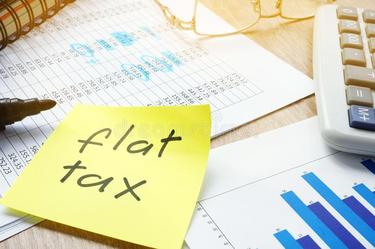
The term “flat tax” is defined as an income system wherein all taxpayers pays the same tax rate regardless of their earned income. A flat tax is typically applied to everyone without allowing deductions or exemptions. However, politicians such as Ted Cruz and Rand Paul proposed that certain deductions must be put in place in the system. As of 2016, flat tax system exists in eight U.S states although legislation is afoot in at least one state to convert it to a progressive system.
Is it true that taxation is simplified by a flat tax?
Since flat tax system allows everyone to pay the same tax rate, eliminates deductions, tax credits, and most exemptions, tax advocates insist that is is a fair system and that it simplifies tax code making it easier for taxpayers to comply. It curbs biases on certain behaviors and activities, in theory, as well. There are even proposals for replacing Federal Form 1040 by a simple postcard wherein wages will be written and will be multiplied by one tax rate.
How does flat tax works?
Only earned income is taxed under a flat tax system, meaning double taxation is removed. In order to encourage citizens in investing more, no tax will be imposed on dividends, interest on savings, and capital gains that result in investment or increases in asset value.
How does a flat tax affect economic growth?
Under a flat tax system, earners with higher incomes will not be penalized for being productive and earning more money which will then encourage economic growth according to its supporters. They also insist that progressive tax only causes penalties for things like hard work, risk-taking, and entrepreneurship; flat tax will be able to avoid all of this by taxing every taxpayer’s earned income at the same rate. At the state level, on the other hand, moving to a lower flat tax rate instead of the reduced top income tax rate will encourage and attract business investments. Overall tax revenue and economic stability are also seen once high-income individuals come in.
What are the loopholes in a flat tax system?
An argument is presented by those who opposed flat tax system saying it only places an undue burden on the lower and middle class because deductions removal and expansion of the tax base and include every level of income earned by every individual. They insist that the poor people, as well as those who are most affected by taxation and are least likely able to pay, will be the ones who will suffer once the system changes. The working class will have to support the idle rich once unearned income is exempted. However, there are flat tax systems in the U.S that can get away with this problem by exempting taxpayers who fall below certain income levels and by making special exemptions or tax credits for low-income individuals available.
Progressive tax systems, on the other hand, are pushed by those who opposed flat tax rate and contends that its a fair system because disposable earnings are being taxed, meaning income is subtracted with deductible expenses. They also said that wealthy people must pay more because their disposable income is much higher, therefore, their ability to pay is greater too. The economy will also improve once taxes on the middle class are decreased as they make up the largest part of the general public. People will have a more disposable income to spend on products in this type of system as well according to its opponents.
Does Flat Tax exist in other countries?
Among the many nations in the world, Russia is the largest nation to use a flat tax system. Other countries that use the system include Estonia, Latvia, and Lithuania. So far Russia imposes a 13% flat tax on earnings and has considered moving to a progressive tax to increase their tax revenue.
The payroll tax is an example of a flat tax in the United States. There is a levy of 12.4% payroll tax given by the IRS as of 2018 wherein employees pay 6.2% while their employers pay their share of 6.2% of the tax. For self-employed taxpayers, the full amount of taxes are submitted on their own. This type of tax is considered flat because the same percentage is imposed on all wage earners. People with earnings below the $128, 400, however, are the only ones are subject to payroll tax which results to the tax being effectively regressive even though only one rate is being used.
